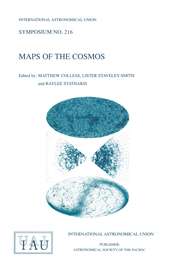No CrossRef data available.
Article contents
A Bayesian approach to ridge fitting in the ω-k diagram of the solar five-minute oscillations
Published online by Cambridge University Press: 03 August 2017
Abstract
The acoustic oscillation modes of the Sun cluster along ridges of power in the ω-k plane. Fitting curves to these ridges provides input for methods that reveal information about the Sun's interior. This curve-fitting task is difficult due to noise in the data, close spacing between ridges at low k, and heuristic approaches to the fitting problem. The procedure we are investigating employs a simple but powerful rule from Bayesian decision theory in an effort to minimize the impact of such problems. This Bayesian approach allows one to make systematic use of prior physical and phenomenological information to assign a prior probability that a candidate curve gives the best fit to a ridge. Bayes' rule then permits one to update this probability using the new ridge power data. The maximally probable candidate curve given both new and prior information is chosen as the best fit.
Information
- Type
- Chapter 8: Techniques for Observing Solar Oscillations
- Information
- Symposium - International Astronomical Union , Volume 123: Advances In Hello- and Asteroseismology , 1988 , pp. 485 - 489
- Copyright
- Copyright © Reidel 1988

